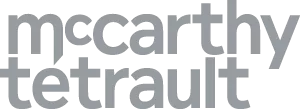- in United States
- with Senior Company Executives, HR and Finance and Tax Executives
- with readers working within the Accounting & Consultancy, Healthcare and Law Firm industries
The way in which our economy extracts, uses and disposes of resources is placing ever increasing pressure on our ecosystems, as well as communities and public health. According to the Global Waste Index of 2022, Canada ranked 31st in the world based on waste production (706 kg per year), incineration, and landfill use. However, Canada places second in the list of countries with the highest amount of daily per capita municipal solid waste ("MSW") at 2.33 kg/per capita. The United States holds top spot in the waste generation game with a daily per capita amount of 2.58 kg of MSW. Globally, the United Nations Environment Programme reports in its Global Waste Management Outlook 2024 that our planet is home to approximately 2.1 billion tonnes of MSW, a figure which is expected to rise by 80% to 3.80 billion tonnes by 2050 if urgent action is not taken. In addition to municipal waste, human activity generates significant amounts of waste in other sectors, including agricultural, healthcare, construction and demolition, and industrial and commercial waste. As governments look to shift from a linear economy – where products move in a straight line from resource extraction to waste disposal – to a circular economy, new approaches are evolving to manage consumer waste. Sustainable product design and the diversion of waste from landfills are key components of a more circular economy, which aims to retain and recover as much value as possible from resources through the reuse, repair, refurbishment, remanufacturing, repurposing and recycling of products and materials.
The Rise of EPR Programs
In the 1980s, many mid-to-large size municipalities implemented recycling programs, relying on curbside collection with bins, boxes or bags. Local governments (i.e. municipal governments) have traditionally borne the cost and responsibility of managing MSW. As a result, the costs associated with collecting and recycling MSW have been artificially low because landfills often charge rates that are less than the true costs of running the service. At the same time, households do not pay directly for curbside collection – most homeowners pay for garbage collection through property taxes and strata fees. Under this system, the recyclability of products and sustainability of packaging received little attention. In recent years, changes in the global recycling markets meant that municipalities struggled to find markets for their recyclable materials, and municipal budgets took a corresponding hit.
To incentivize waste diversion and shift the burden of recycling costs from municipalities to producers upstream, Extended Producer Responsibility ("EPR") programs have transformed the waste management landscape in Canada. EPR transfers the responsibility of recycling from municipalities to the companies that produce consumer materials. The idea of EPR programs is not new. In 2009, the Canadian Council of Ministers of the Environment ("CCME") approved a Canada-wide Action Plan for Extended Producer Responsibility, where jurisdictions committed to working towards the development of EPR framework legislation and/or regulations and promoting a harmonized approach to EPR policies and programs across Canada.
In essence, EPR programs make producers fully financially and physically responsible for the waste generated from their products and materials. EPR programs are distinguishable from product stewardship programs. While both types of programs have a common goal of holding producers accountable for their products at end-of-life, product stewardship programs share collection and processing responsibilities between producers and other stakeholders, usually local governments.
EPR programs use a market-based approach to promote waste diversion and encourage product redesign with waste minimization in mind. By requiring companies to cover the cost of managing their product materials, manufacturers can choose to use more sustainable materials that incur lower fees relative to companies that use lower-grade, hard-to-recycle materials. By creating incentives to maximize the useful life of materials, EPR programs aim to reduce waste and improve efficiency in waste management systems.
EPR programs in Canada have been implemented at the provincial level through legislation, and the transition to EPR is ramping up across provinces. Currently, EPR programs cover a range of products, including agricultural products, automotive products, beverage containers, electronics and electronic equipment, household hazardous waste, lighting products, packaging and printed materials, pharmaceuticals and used tires. Since EPR programs are managed at the provincial level, producers are faced with differing program requirements across jurisdictions. An inventory of recycling programs (both EPR and product stewardship programs) in Canada is available from Environment and Climate Change Canada online.
Obligated producers can operate their own waste collection system or join a system operated by a Producer Responsibility Organization ("PRO"). PROs establish and operate waste management systems for various products to comply with regulatory requirements imposed on producers. They also take on reporting obligations and represent producers for any purpose under the regulations.
EPR programs are generally funded by environmental handling fees ("EHF") (also referred as eco-fees) that are added to the price of designated products. EHFs are typically calculated based on the operating costs of the program, including the costs of collecting, transporting and recycling the product, as well as public education initiatives. EHFs may be paid at the point-of-sale by the purchaser of the product, or elsewhere in the supply chain by producers, retailers and distributors. Depending on the province, EHFs can be incorporated into the price of the product or added as a separate line item on the sales receipt. While there are generally no restrictions on the ability of producers to pass the costs of EPR programs on to consumers, there are a few programs which prohibit the passing on of costs to consumers (e.g. PEI's Materials Stewardship and Recycling Regulations prohibit the passing on of costs to consumers for lamp products, paint, oil and glycol, batteries, pharmaceutical products and medical sharps).
British Columbia has one of the most comprehensive EPR programs in Canada, which collectively generates an estimated $500 million annually to operate recycling programs in the province. Set out below is an overview of current EPR legislation across Canada.
EPR Programs Across Canada
This table provides an overview of relevant EPR programs in place as of March 15, 2025. Materials that are subject to government regulated product stewardship programs are denoted with an asterisk.
Looking Ahead – Expansion of EPR Programs Across Canada
EPR programs are expanding significantly across Canada, with greater responsibility shifting to producers for obligated materials. Notably, Alberta, Saskatchewan, Ontario, Nova Scotia and Yukon are regions where new EPR initiatives are being implemented in 2025.
Alberta's EPR framework is expected to be operational by April 2025, at which time obligated producers need to have waste management systems for single-use products, packaging, and printed paper products ("PPP"), as well as hazardous and special products ("HSP") such as batteries and pesticides. The Alberta Recycling Management Authority, which has managed regulated recycling programs for used oil, paint, tires and electronics in Alberta, will provide oversight of Alberta's new PPP and HSP programs. Alberta's HSP program replaces the province's existing household hazardous waste program and expands the list of accepted materials.
Saskatchewan has begun their transition to full EPR, with phase 1 having begun on December 1, 2024. Phase 2 of the implementation will begin on December 1, 2025, and Phase 3 will begin on December 1, 2026, after which obligated producers will assume full financial and operational control of the collection, transportation, receiving, processing and marketing of collection and recycling of household packaging and paper products collected through depots.
Ontario's Blue Box Program – a waste management program for product packaging, paper products or packaging-like products – is undergoing a transition to a new regulatory framework. Starting in 2023, and continuing through 2025, responsibility for the Blue Box Program is shifting to producers, and by January 1, 2026, producers will bear full responsibility for Blue Box programs across the province.
Nova Scotia is progressing towards the adoption of EPR initiatives for materials such as packaging, paper products and blue bag items. The province issued two EPR policies for the relevant materials on August 2, 2023, and has a scheduled implementation date of December 1, 2025.
Yukon's EPR regulation took effect on January 25, 2024. In 2025, EPR programs for the following products will come into effect:
- batteries – June 24, 2025;
- oil, diesel exhaust fluid, and antifreeze – August 1, 2025;
- packaging and printed paper – November 1, 2025; and
- hazardous and special products – anticipated program start in fall 2025.
In BC, the government announced in its Extended Producer Responsibility Five-Year Action Plan 2021-2026 that it will expand the categories of products in the EPR initiative in phases to include:
- mattresses and foundations (in 2025);
- compressed canisters, such as single-use camping fuel and fire extinguishers (in 2025);
- medical sharps used by people at home (in 2025);
- hybrid and electric vehicle batteries and other battery types (in 2026); and
- emerging electronics and more moderately hazardous products by clarifying product categories (in 2026).
To view the original article clickhere
The content of this article is intended to provide a general guide to the subject matter. Specialist advice should be sought about your specific circumstances.





